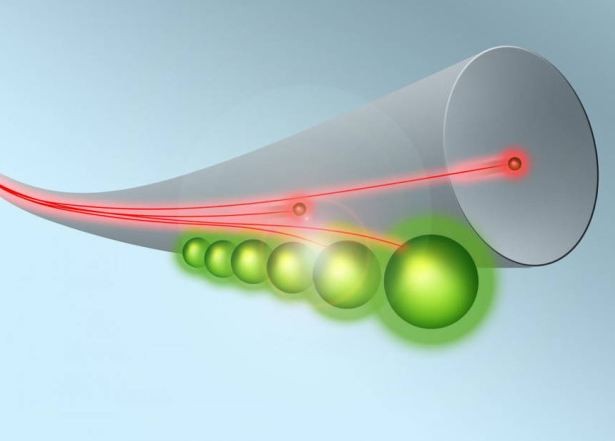Using lasers and glass fibers, researchers managed to stop the speed of light in an experiment that could have profound effects on making quantum communications an everyday reality.
Scientists at the Vienna University of Technology (TU Wien / Vienna Center for Quantum Science and Technology) first slowed the speed of light to 180 km/h then managed to bring the light to a complete stop and to "restart" it again later.
This achievement is an important prerequisite for future glass fiber-based quantum internet in which quantum information will be teleported over great distances. Quantum communications will also make eavesdropping impossible.
The TU Wien scientists slowed down the speed of light from its typical speed in a vacuum of 1.08 billion km/h (300 million meters per second) to 180 km/h using fiber optics, which is the system currently used around the world for telecommunications. This made their results even more useful in the real world.
To slow down the speed of light, the scientists grafted cesium atoms to the fibers, which allowed it to slow light down. They were also able to bring the light to a complete stop and restart it again with the photons staying exactly the same. This achievement is an important prerequisite for quantum communication.
"In our system, this effect is extreme, because we are creating an exceedingly strong interaction between light and matter," said Professor Arno Rauschenbeutel (TU Wien / Vienna Center for Quantum Science and Technology).
"The speed of light in our glass fiber is only 180 kilometers per hour. Any express train can top that."
The Viennese team used an additional control-laser in their experiment to couple the high-energy state to a third atomic state. This was necessary because the interplay between these three quantum states prevents the photon from just being absorbed and randomly emitted.
Instead, the photon's quantum information is transferred to an ensemble of atoms in a controlled way, and it can be stored there for some time. The photon is turned into a collective excitation of atoms.
After two microseconds, a period of time in which the light would normally have traveled about half a kilometer, the control laser was used to prompt the atoms to emit the light back into the glass fiber. The properties of the photon stayed exactly the same -- an important prerequisite for quantum communication.
The scientists said being able to store photons is an important technological step towards quantum communication over great distances.
"Quantum physics allows us to create a connection between sender and receiver, which makes eavesdropping impossible," said Rauschenbeutel.
"The fundamental laws of quantum physics make sure that no one can tap the connection without being noticed."




























